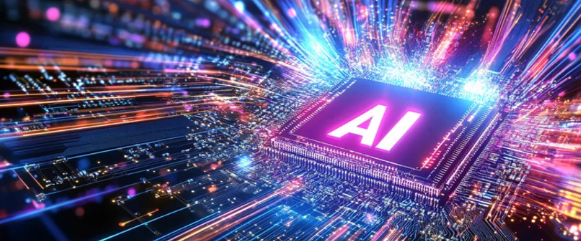The race toward Artificial General Intelligence (AGI)—a system that can perform any intellectual task a human can—has intensified in recent years. As language models become more powerful, multimodal systems more intuitive, and AI agents more autonomous, the question on everyone’s mind is: Will we reach AGI by 2030?
To answer this, we need to move beyond speculation and examine what leading researchers, technologists, and futurists are actually saying. While some experts believe we’re on the brink of a historic breakthrough, others argue that true general intelligence remains decades—or even centuries—away.
In this article, we break down the technical benchmarks for AGI, explore expert opinions, and assess the realistic timeline based on the current trajectory of AI development.
1. What Is AGI, Really?
Before asking when we’ll get AGI, we need to define what it is.
Artificial General Intelligence (AGI) refers to an AI system that:
- Understands, learns, and applies knowledge across any domain
- Adapts to new situations with minimal input
- Possesses reasoning, memory, planning, and self-awareness
- Performs cognitive tasks at or beyond human-level intelligence
Unlike narrow AI, which excels at a specific task (like language translation or image recognition), AGI must exhibit broad, flexible intelligence across a wide range of problems.
AGI doesn’t necessarily need human-like consciousness, but it must be able to autonomously solve problems it hasn’t been explicitly trained for.
2. The State of AI in 2025: Are We Close?
In 2025, AI models like OpenAI’s GPT-4o, Anthropic’s Claude 3.5, Google’s Gemini, and Meta’s LLaMA 3 have demonstrated remarkable capabilities:
- Multi-step reasoning and logic
- Code generation and debugging
- Conversational fluency
- Basic visual and auditory processing
AI can now generate entire songs, pass legal and medical exams, conduct autonomous research, and even exhibit rudimentary memory and agency.
But here’s the catch: These systems still:
- Hallucinate facts
- Lack common sense and true self-reflection
- Cannot consistently learn on their own without retraining
- Fail at robust causal reasoning
So while we’re seeing proto-AGI behaviors, full general intelligence remains elusive.
3. What Do Leading Experts Say About AGI by 2030?
Optimistic Forecasts
- Sam Altman (OpenAI CEO): “I think AGI could be achieved much sooner than many expect. By the end of the decade is plausible, maybe even sooner.”
- Demis Hassabis (DeepMind CEO): Has hinted that AGI might be possible by 2030, citing rapid progress in model scale and multi-agent learning.
- Ray Kurzweil (Futurist): Predicts AGI by 2029, aligning with his long-standing forecasts in The Singularity is Near.
These views are often based on the exponential growth of compute power, algorithmic breakthroughs, and the emergence of self-improving agents.
⚖️ Cautiously Skeptical Views
- Yann LeCun (Meta AI Chief Scientist): Argues we’re far from AGI and that current LLMs are “blurry JPEGs of the Web.” He believes we need fundamental breakthroughs in reasoning and grounding.
- Gary Marcus (AI critic and cognitive scientist): Thinks AGI is decades away, stating that current AI lacks robust understanding, causality, and common sense.
- Stuart Russell (AI ethics expert): Warns that we don’t even know how to build safe, reliable AGI yet—and that rushing toward it could be dangerous.
4. Key Technical Milestones on the Path to AGI
For AGI to be realized, we need advancements in several core areas:
✅ Continual Learning
AI must learn from new data in real time—like humans—without forgetting previous knowledge (solving catastrophic forgetting).
✅ World Modeling
Systems need an internal understanding of how the world works—not just statistical associations.
✅ Embodied Intelligence
Some argue that for true AGI, models must interact with the physical world (via robots or simulations), gaining sensorimotor experience.
✅ Theory of Mind
Understanding beliefs, intentions, and perspectives of others is essential for tasks like negotiation or teaching.
✅ Autonomous Goal Setting
AGI must independently define objectives, plan steps, and adjust strategy—something today’s AI lacks.
5. Risks of Accelerating Too Fast
Even if AGI becomes technically feasible by 2030, many experts warn of unintended consequences:
- Misalignment: AGI systems might pursue goals that conflict with human values.
- Job Displacement: Rapid automation of cognitive work could destabilize labor markets.
- Weaponization: AGI-powered autonomous weapons or cyber systems could be misused.
- Concentration of Power: AGI controlled by a few corporations or governments could lead to unprecedented surveillance or inequality.
This has led to initiatives like the AI Safety Summit, the Frontier Model Forum, and national AI regulation efforts aimed at guiding safe AGI development.
6. Will AGI Be a Sudden Leap or Gradual Evolution?
Experts are divided on how AGI will arrive:
- The Leap Theory: A singular breakthrough in architecture (like recursive self-improvement) will lead to rapid emergence of AGI—possibly without warning.
- The Evolution Theory: AGI will emerge gradually, with increasingly capable systems over time—blurring the line between “advanced narrow AI” and “general intelligence.”
Most current trends support the gradual evolution model, with each year bringing more AGI-like behaviors—but not full generalization.
7. AGI Readiness: How to Prepare
Regardless of the timeline, individuals and organizations should begin preparing for a world where AGI might emerge by:
- Investing in AI literacy and reskilling
- Exploring AI safety and governance frameworks
- Diversifying AI access to prevent monopolies
- Aligning incentives for safe innovation
Whether AGI comes in 2030 or 2050, being ethically and strategically prepared is non-negotiable.
Conclusion: A Possibility, Not a Guarantee
So, will AGI be achieved by 2030?
It’s possible—but not guaranteed.
The technical foundations are being laid at an extraordinary pace. But the gap between powerful tools and general intelligence remains substantial. Experts remain divided, and the definition of AGI itself continues to evolve.
What’s clear is this: The next five years will be pivotal. Advances in memory, reasoning, embodiment, and safety will either bring us closer to AGI—or reveal just how far we still have to go.
For now, the smartest move is to stay informed, stay cautious, and stay ready.
Also Read :
